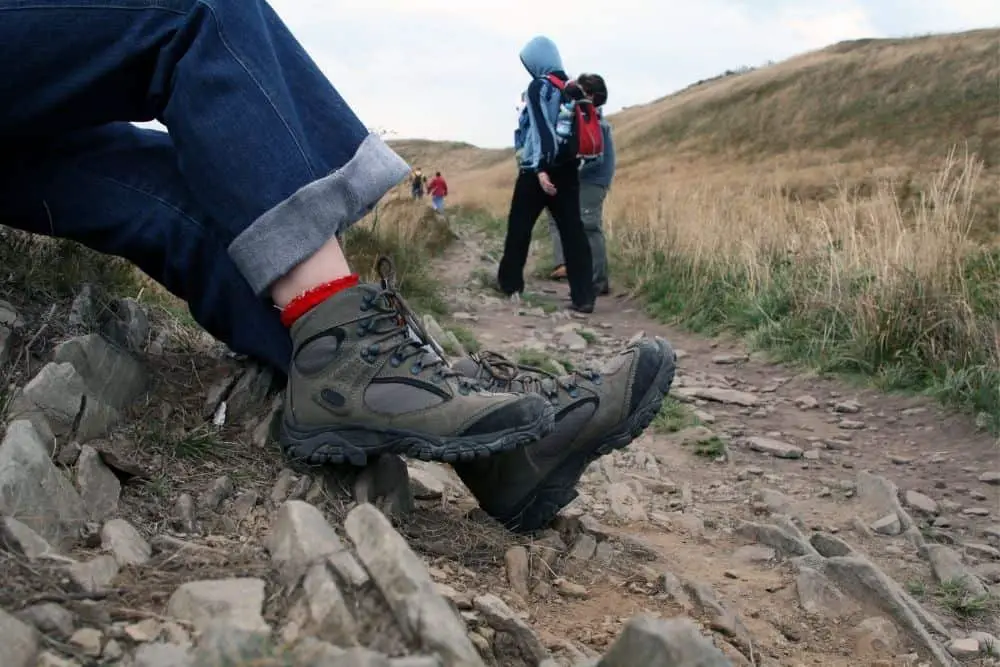Undoubtedly, hiking Boots are essential for every hike, and unfit boots can make the experience not so good. And that is why wearing small hiking boots equals signing up for discomfort and pain all through hiking.
Some people advise that you go for hiking boots that fit snugly around your feet, but does that mean they have to be tight? Not at all.
Tight hiking boots have their consequences, and you’re better without them. Have you been feeling discomfort every time you wear your hiking boots?
It’s probably because they are too tight on your feet, and you didn’t know. You should not wait until the tight hiking boots become a bigger problem before you do something.
First, you need to know if they are tight or snugly fit. So, in this article, we’ll discuss warning signs you need to watch out for when wearing your hiking boots.
Also, we will discuss the consequences of tight hiking boots and why you should beware of them. Lastly, we will suggest the right fit of hiking boots that we consider not too tight.
Let’s get started.
Contents
What If My Hiking Boots Are Too Small?
There is nothing wrong with wearing small hiking boots as long as they fit properly around your feet. However, hiking boots become a problem when they are overly small and too tight.
While you may be interested in wearing tight hiking boots, so your feet don’t slip up and down, comfort should be your priority. Wearing hiking boots that are too small will make you feel completely uncomfortable when on the trail.
Not only that, they can cause more significant foot issues that you want to avoid as much as possible. So, what are the implications of wearing hiking boots that are too small?
1. Discomfort

The first thing you’re signing up for by wearing overly small hiking boots is discomfort. Wearing hiking boots that are too tight will make you feel very uncomfortable when hiking.
First, there will be little room to accommodate your feet, especially your toes, which need some freedom in your boots. Second, you would be squashing them together and against your hiking boots inner.
When it happens, you will feel uncomfortable, and that would impede you from enjoying your hike. Also, your feet will hurt so bad when hiking, and you must endure that until you take them off.
Generally, small shoes make the day hell for you, let alone boots for something as intense as hiking. However, combining the pain of wearing small boots with hiking uphill or downhill or on rough terrains makes for an unforgettable and painful experience.
2. Foot pain
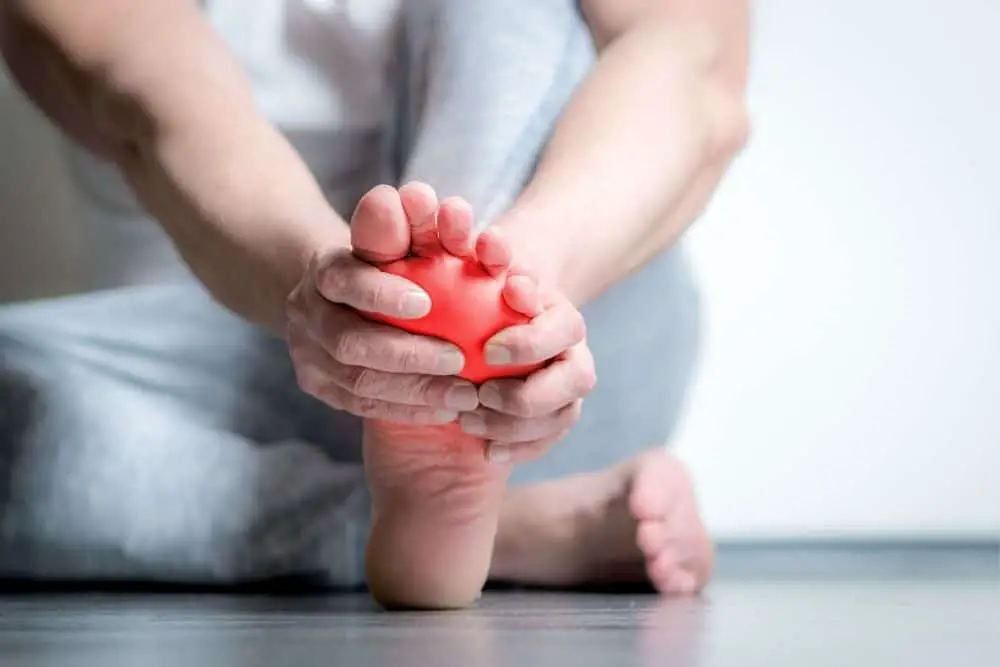
Wearing hiking boots that are too small means that you would have to deal with foot pain. Usually, people link ill-fitted shoes with pains in the foot.
So, when you wear hiking boots smaller than your regular size, you’ll likely feel pain in your toes, heels, underneath your feet, and other places. The leading cause of foot pain in small footwear is the toe box area.
Generally, when the toe box is too small, your feet suffer. First, your toes will not have enough room to move freely, which can cause pain in the front of your foot.
Second, your heel will probably suffer some pain, too, while trying to push them back, so your toes don’t suffer much. Also, foot pain can last for a while, even after taking the boots off. So, you should avoid hiking boots that are too small altogether.
3. Pain in areas other than your feet

When you wear overly small hiking boots, then you’ll probably have more pain to worry about in other parts of your body. For example, you may end up with pains in your legs, knees, hips, or lower back.
This usually occurs when you’re trying to adjust your feet in your hiking boots so they don’t hurt so much. Also, it happens when you try to maintain a good posture and gait amidst the pain you feel in your feet.
So, the more you adjust your feet and other parts of your body, you probably put pressure on them, making them sore. Also, you mess with your body alignment during the process, resulting in an incorrect posture.
When you maintain an incorrect posture throughout the hiking period, you make your body sore and ache all over. You can avoid this soreness by getting the proper fit boots.
4. Ingrown toenails
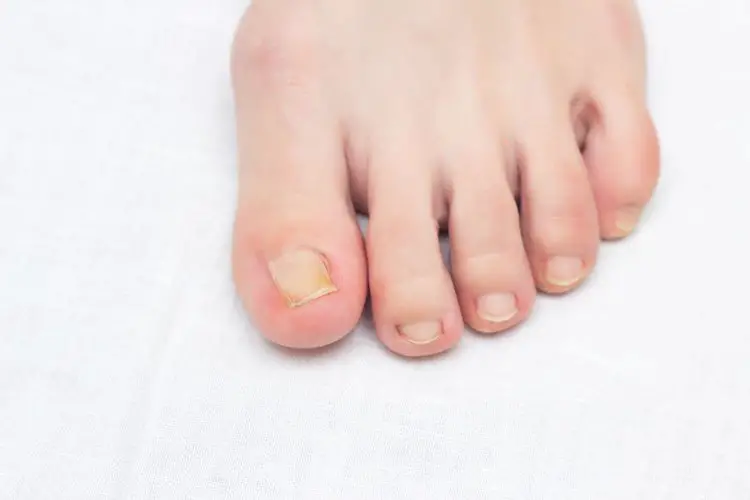
Another consequence of wearing hiking boots that are too small is ingrown toenails. This is a condition where the edges of your toenail grow into your toe skin.
This condition usually occurs in the big toe, and when it happens, the toenail has no place to grow due to constricted toes. Additionally, ingrown toenails make your toes swell, hurt, and even worse, can catch an infection.
Plus, when your hiking boots are too small, they squish your toes together; then the toenail has no room to grow outward. You should avoid overly small hiking boots at all costs, especially if you have diabetes because that puts you at risk of more complications.
5. Foot ulcer in diabetic people
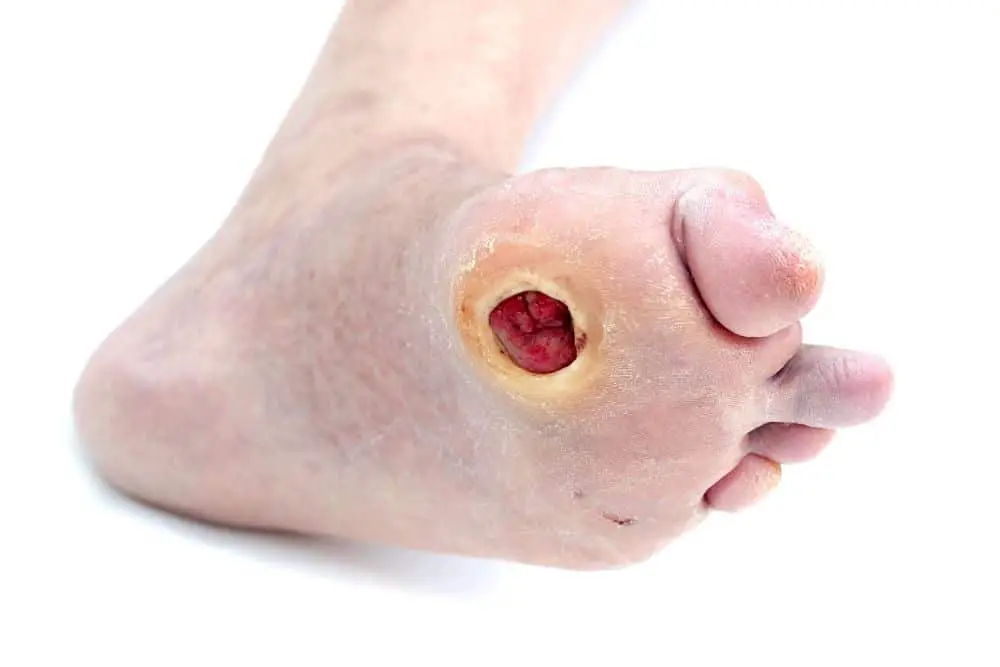
Wearing overly small hiking boots can cause foot ulcers in people who have diabetes. Foot ulcers are sores or wounds that occur from wearing tight footwear.
It happens when your feet rub against your shoes occasionally over a long period. The more your feet rub against your boots, the faster they peel off and become sore.
So, through that, they could become open sores or wounds that may take a long period to heal due to a diabetic condition. Symptoms that accompany foot ulcers are swelling, burning, and pain.
Foot ulcers could result in more severe conditions, sometimes, it could be as worse as amputation. Therefore, you should wear properly fit hiking boots if you have diabetes. Otherwise, you’re still better off overly small hiking boots.
6. Athlete’s foot
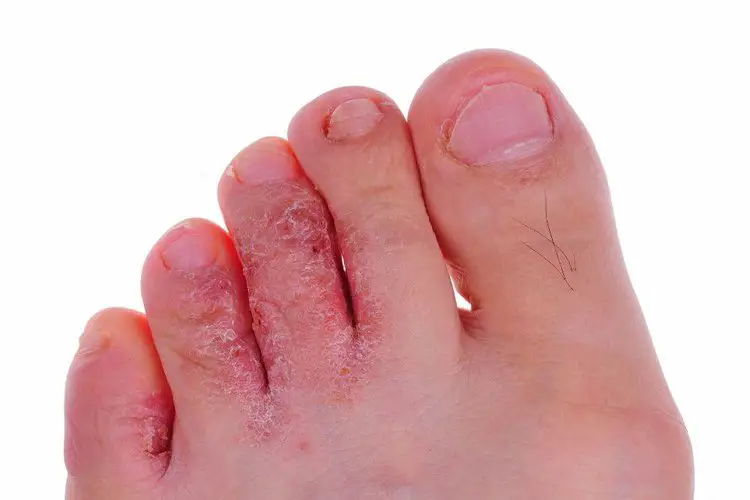
Another consequence of wearing hiking boots that are too small is an athlete’s foot. This fungal infection affects the feet and causes itching, acute pain, and burning sensations.
Tight hiking boots don’t allow your feet to breathe well, resulting in sweaty feet, and consequently, athlete’s feet. But, as opposed to its name, this fungal infection can affect anyone, whether they are athletes or not.
Also, it affects the areas between your toes and is contagious. It can spread to other toes and other people.
7. Corns and Calluses
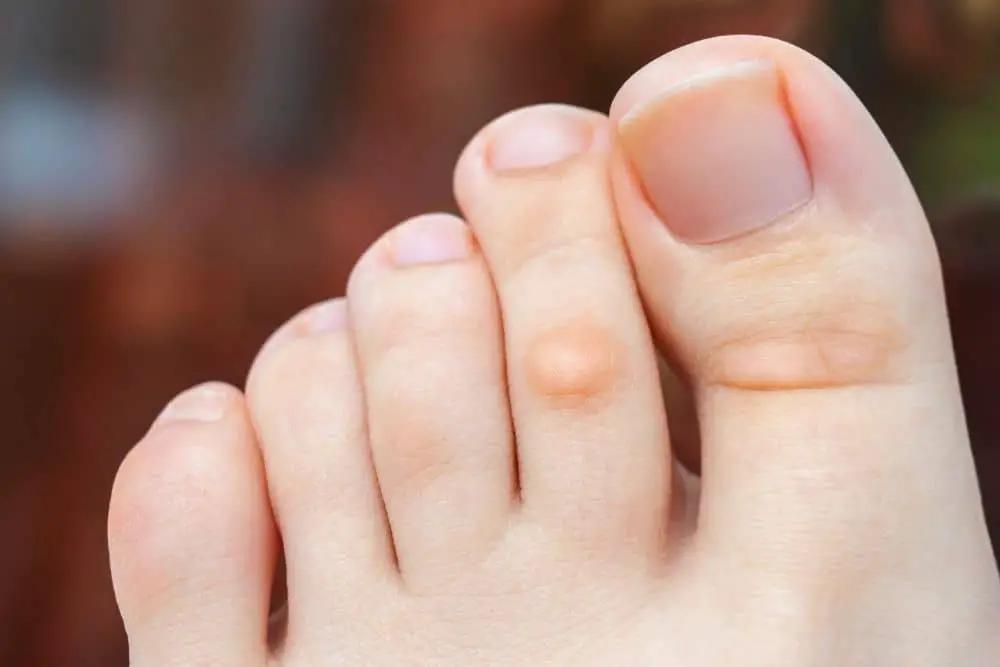
Wearing too-small hiking boots can result in corn and calluses. When you wear tight hiking boots, it causes your feet to rub your shoes and toes together frequently.
This causes friction and pressure on the foot’s skin, leaving you with corn on the skin on the top of your toes and calluses beside your toes. As a result, you may feel uncomfortable when hiking and wearing other shoes that cover your feet.
8. Bunions
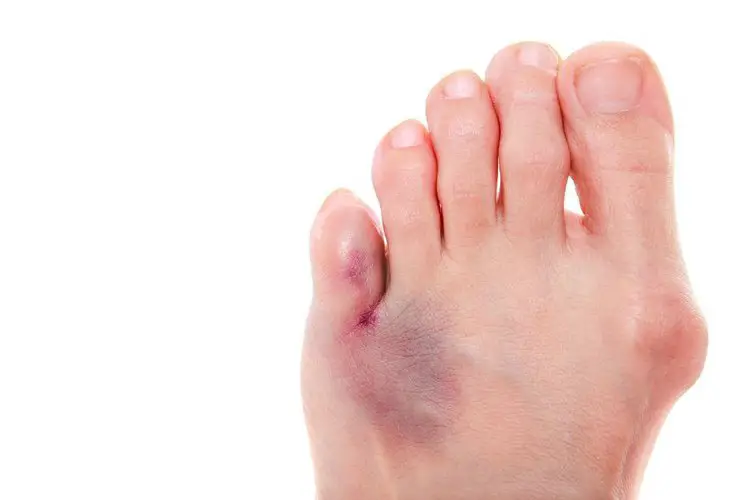
You may also get another foot deformity known as bunions from wearing hiking boots that are too small. Bunions occur when there is a shift in the bone of your big toe, making it lean towards the second one.
This happens after wearing unfit shoes over a long period, and you may not notice bunions on time till it becomes too obvious. So, if you wear tight hiking boots, you put yourself at risk of a faulty foot structure, that is, bunions.
You can prevent that by wearing boots that have enough room for your toes to wiggle.
9. Heel Spurs
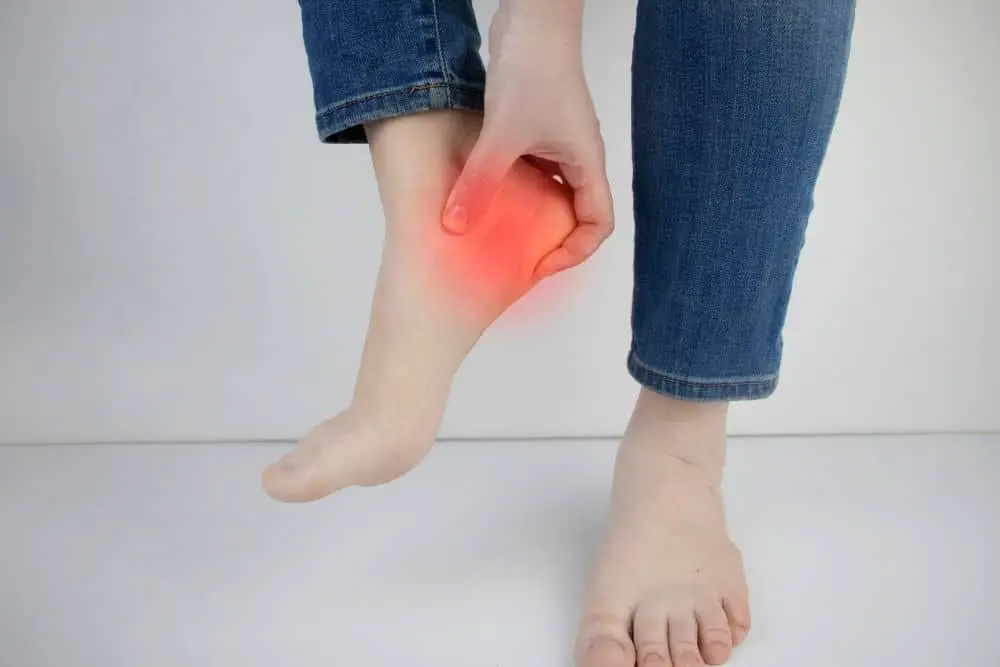
Wearing hiking boots that are too small can also cause heel spurs. This occurs when you put excessive pressure on your heel, bone, and ligament while hiking in your tight hiking boots.
You may feel pain immediately or not, which can lead to plantar fasciitis, a condition where there is inflammation in the plantar fascia area. The pain could be severe; however, you can save yourself from the pain by wearing fit hiking boots.
10. Hammertoes
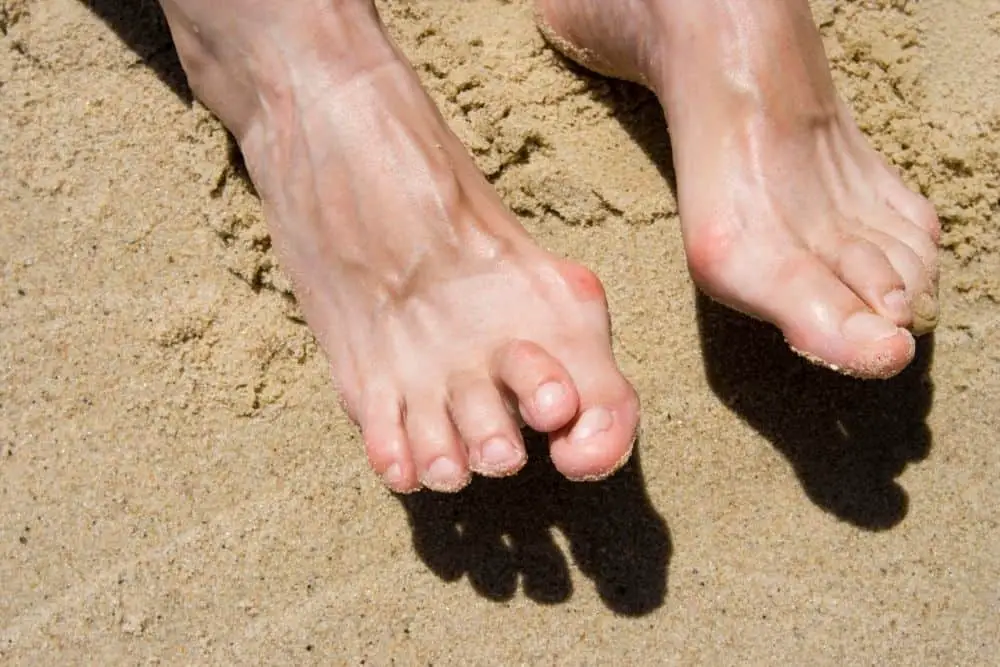
When your toes press against each other and your hiking boots inner, you could have hammertoes. Hammertoes occur when your toes start bending in a claw-like manner rather than straight.
Overly small hiking boots make your toes curl, and sometimes they can retain the position permanently even with surgery. It’s a progressive-like process that starts with pain, corn, and calluses, and eventually permanently deformed toes.
11. Metatarsalgia
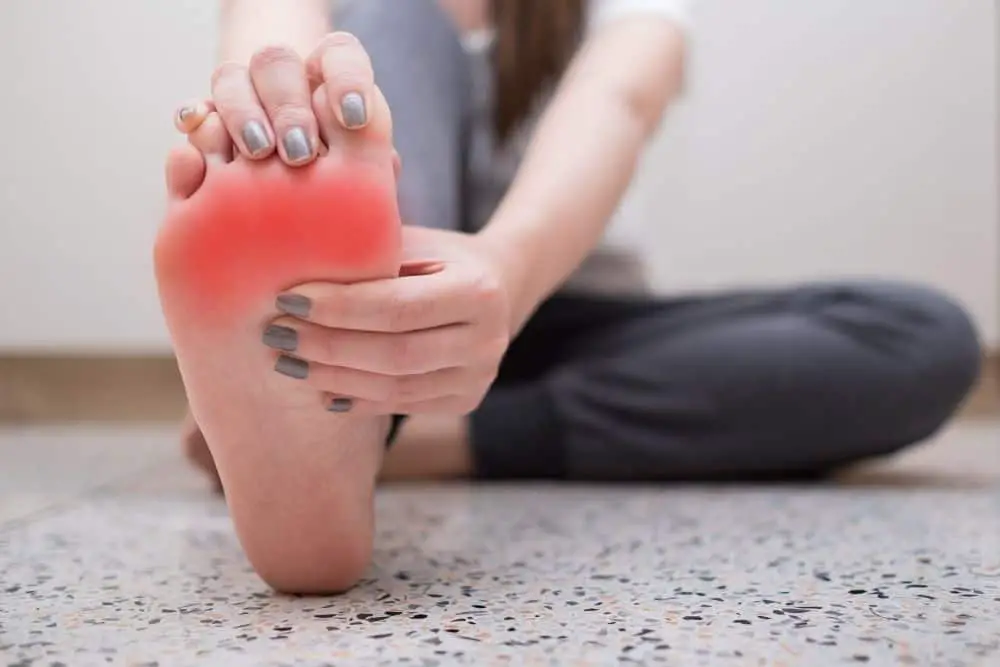
Ill-fit hiking boots can also cause metatarsalgia. This is a situation where you experience pains in the ball of your foot.
You could experience this pain during and after hiking. However, you can save yourself from metatarsalgia by ensuring your boots fit properly around your feet.
How To Know If Your Hiking Boots Are Too Small?
Again, hiking boots are a crucial part when planning to have a pleasant hike experience. When they don’t fit properly, they could become a problem on and off the hiking trails.
This is why you need to know if hiking boots properly fit before you purchase them. Don’t just go into the store, buy and go home. That could be a big mistake.
You need to watch out for some signs as you buy. You should check whether they have enough toe room, they fit snugly, what makes them unfit, and more.
Also, you need to replace tight hiking boots if you already bought them without knowing. So, how do you know hiking boots are too small?
1. Pressure at the end of hiking boots

You can tell hiking boots are small if your toes feel some pressure at the end of hiking boots. You can’t know this without testing the boots on. So, wear hiking boots and walk on a downward incline. In addition, you can also test them by standing straight.
After trying either of the methods and you feel some pressure, you should pick another pair in the store or replace them with new ones if you already have them.
Pressure at the end of hiking boots can result in painful toes since its impact is mainly on the toes. So when you keep wearing hiking boots that feel this way, you put your feet at risk of some painful toe conditions.
2. Overlapping toes
Another sign that your hiking boots are too small is when your toes overlap in the hiking boots. This is due to less toe room, so your toes have to lay over one another to fit properly.
You shouldn’t make your toes suffer, so you are better off with hiking boots that fit appropriately and leave enough toe room for your toes.
Overlapping toes could result in bruised toes. Plus, it isn’t pleasant when your toes can’t lay freely and flatly in your hiking boots. It could result in friction, blisters, sore toes, and other pains in your toes.
3. Pressure on both sides of your feet

If you feel pressure on both sides of your feet when you wear hiking boots, it means that they are too small for you. It feels like the boots are squeezing them on both sides.
This becomes a more significant concern if they still feel that way even after loosening the lace of the hiking boots. That’s a warning signal that you shouldn’t buy them or wear them on hiking trails.
Pressure on both sides can result in hammertoes and bunions. So, not paying attention to that signal could be bad for you.
4. The insole is shorter than your feet
Another sign that hiking boots are too small is when the insole is shorter than your feet. You can know this by removing the insole in the hiking boots.
After that, place your feet on the insole and check if there is no space between your longest toe and the insole edge. If the insole is smaller, then the hiking boots don’t fit well.
Wearing hiking boots with short insoles can make your feet feel uncomfortable in your hiking boots. It indicates lesser space and screams unfit for your feet and toes.
5. Boot size is smaller than your regular size
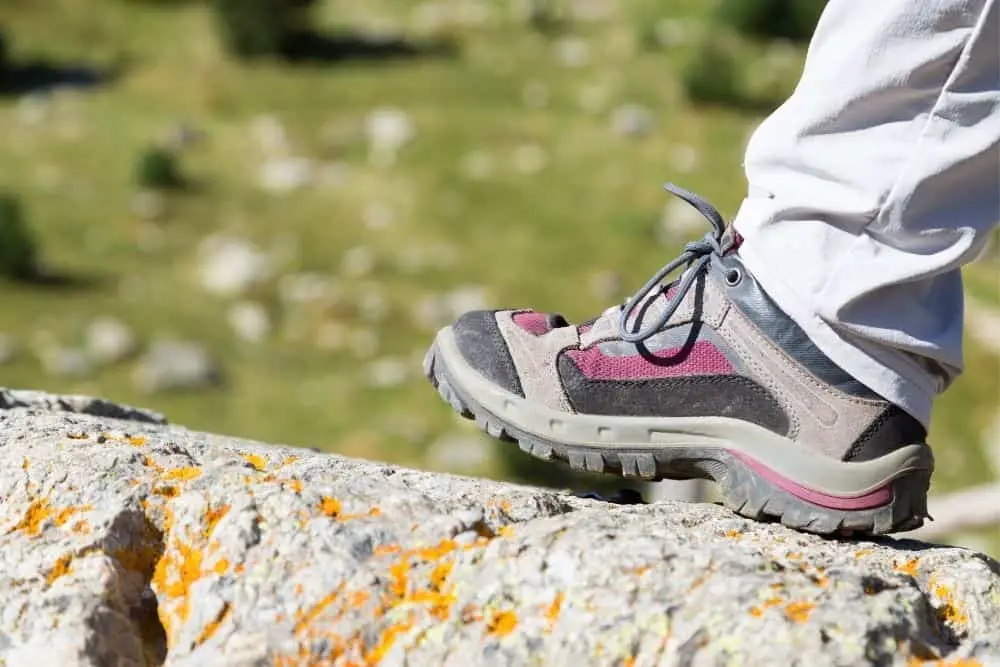
Hiking boots sizes differ depending on the manufacturer. What could be your shoe size may be smaller for you because of the brand. However, if the size is smaller than your shoe size, it’ll probably be too small for you.
While they may look smart and good on your outfit, small boot sizes are unfit for hiking.
6. You can’t fit in your thumb
You can also tell hiking boots are small when you can’t put your thumb in after wearing them. A rule of thumb says that you should be able to fit your thumb in your hiking boots.
You can check by pressing the tip of your hiking boots with your thumb. You can feel whether there is too little or much room around your toe area.
You can also slip your thumb behind your heel and see if they go into your hiking boots. If you cannot get your thumb to go in, they are probably too small for you.
Hiking boots that you can’t get your thumbs into become problematic on hiking trails and make the experience horrible for you.
How Tight Are Hiking Boots Supposed To Be?
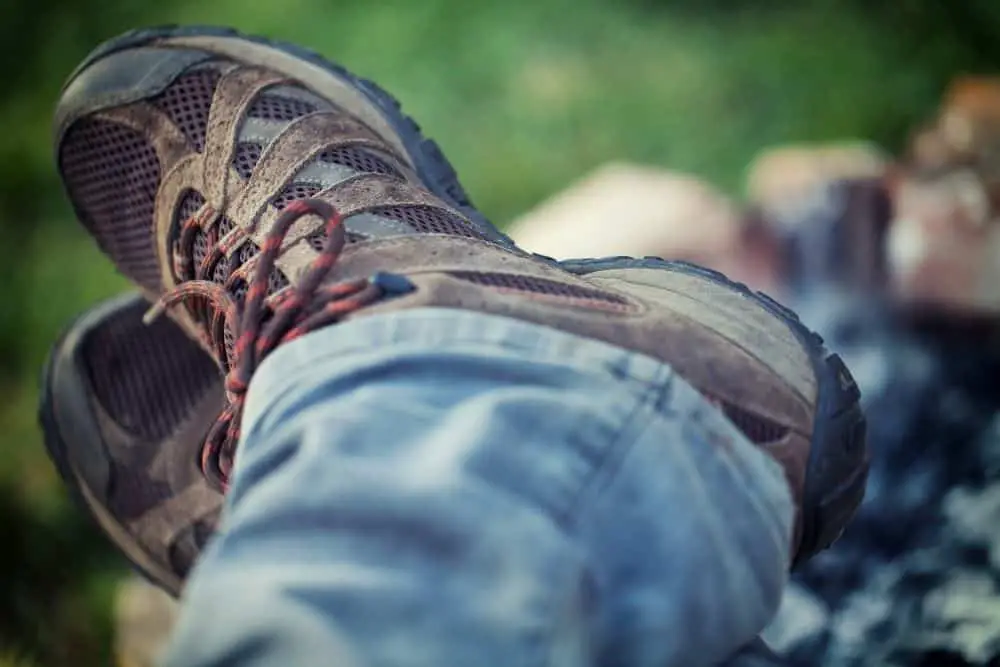
Your hiking boots shouldn’t be too tight or free;. In addition, your hiking boots should fit around your instep snugly, while leaving enough toe room for your toes to wiggle.
Also, they should fit snugly around your heel and the bottom of your feet. It’s normal if small heel slippage appeared in the beginning (¼ inch to ⅜ inch).
You could go for half an inch bigger than your regular shoe size. If half an inch still feels too tight for you, then you can go for a size bigger.
You can check if they fit well by putting your fingers in the hiking boots. So, after wearing the hiking boots, try slipping your index finger right behind your heel and see if it goes all the way in or there’s obstruction.
If it goes in and there’s still more space for more fingers to go in, then your hiking boots are too big. On the other hand, if your index finger cannot go in, it means they are too tight.
Second, you should wear hiking boots with socks on and see if it makes your feet uncomfortable or not. Finally, ensure that there is enough space for your toes to move freely without overlapping.
You can also wear them uphill and downhill and see if your feet move around too freely, or they can hardly stretch out in your boots. Also, you can try standing straight in the hiking boots and check if there is no pressure in any corner of the hiking boots.
If you wear hiking boots that fit perfectly, you will not feel any pressure in any area of your hiking boots. At the same time, they won’t be too loose around your feet.
Conclusion
Generally, hiking boots contribute greatly to the overall hike experience. However, when they don’t fit, it results in many problems, and this is the case with small hiking boots.
However, hiking boots that are too small can result in many issues like mild, severe, temporary, and worse, permanent. Therefore, you need to get hiking boots that fit properly in the first place.
In this article, we talked about the consequences of wearing hiking boots that are too small. Some of which include foot deformities, foot ulcers, discomfort, metatarsalgia, and more.
However, you can prevent them from happening by stretching your tight hiking boots, replacing them immediately or getting the right fit before going hiking. Also, we discussed the signs of tight hiking boots that you should watch out for.
Lastly, we recommended that your hiking boots shouldn’t be too tight or loose, but should fit snugly around your instep, ball of the foot, and heel. When next you’re shopping for your hiking boots, keep everything we discussed in mind.

